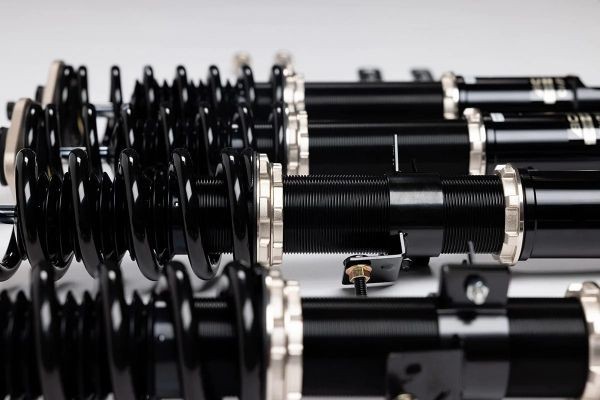Shocks and struts wear with time and miles and will require replacement at some time. We just replaced the original shocks and struts on a 2004 Mitsubishi with over 100,000 miles. Manufacturers generally recommend replacement at around 50,000 miles. However, on this vehicle, we noted significant oil leaks around the seals and that was the indicator that the shocks and struts required replacement.
Be aware that shocks and struts don’t just go “bad” one day, but they lose their effectiveness over time and accumulation of miles. They also may wear more quickly depending on where and how and where you drive (especially if you often drive on bumpy, pot-holed, or gravel streets and roads).

What is the purpose of struts and shocks? Struts are an integral part of the suspension system, actually bearing the weight of the car. Therefore, the front shocks/struts have a greater load-bearing capacity to carry the weight of the engine. Shocks absorb the bumps in the road, helping the car find its equilibrium quickly after you hit a bump. This eliminates “bouncing”, “nose diving” and excessive body roll.
Things to look and listen for if your shocks and struts need replacement:
- Bumps and potholes feel “sharper” (ie. your coffee spills when you hit bumps!)
- Your teeth chatter as you go down a gravel road
- Upon braking, the front end seems to “nose dive” and drop to a stop (poor braking).
- Your vehicle sways on corners, as body control decreases. If you need to swerve quickly to miss another vehicle or obstacle, your vehicle will hesitate, lean, and not follow the turn.
- “Clunking” noise over bumps or with turning. This generally happens when the shocks/struts are failing or have broken.
- Uneven tire wear
When we put your car up on the lift and examine the shocks and struts, we look for damage on the shock or strut or tears in the protective “boot”. The boot is a rubber piece that protects the shock from dust and dirt. When it tears or disintegrates, the dirt that gets in will make the shocks wear more quickly.

Since these components are filled with oil, another thing we check for is leaking. You probably would not notice leaking, because they usually do not drip onto the ground, but instead, coat the entire assembly and will collect dirt and grime.
We can test for bad shocks by “bouncing” one corner of the car. If we push down on the corner and then quickly release it, and the car keeps bouncing after the push, the shock is probably bad and the car's performance will benefit from replacement. Once a shock is leaking, the performance will diminish rapidly.
Further, and more expensive, damage to tires, suspension or steering components could occur if a shock or strut is not replaced when leaking or damaged. Shocks and struts are replaced in pairs (both sides of the front or rear axle) in order to keep your vehicle in equilibrium, side to side. Front strut replacement requires an alignment, whereas on rear struts, it may or may not be required (depending on the suspension’s design).
Vehicle maintenance, like replacing shocks and struts, helps keep your vehicle running smoothly, with fewer “surprise” repairs. We strive to keep you informed, but not pressured, regarding needed or upcoming maintenance for your vehicle to keep you driving safely and reliably.








